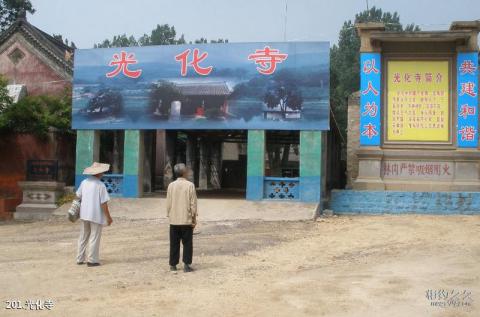
Introduction to Guanghua Temple: Guanghua Temple is located in a mountain valley surrounded by mountains and rivers, surrounded by undulating mountains. According to the Yuan Dynasty's "Reconstruction of Guanghua Temple Stele": "Guanghua Temple was first built in the Northern Wei Dynasty and became known as Guanghua in the Sui Dynasty. The Tang Dynasty ruled the world for more than three hundred years. The mantle was passed down from generation to generation and the sect was not lost. Following the chaos of the Five Dynasties , the temple was abandoned. In the seventh year after the founding of the Zhao and Song Dynasties, it was given the name Chongqing, and it was named Jiayi with the Lingyan Mountain in Mingkong Mountain. "The original temple covers an area of 50 acres, and now only 10 buildings remain. It is a Buddhist holy place. The main hall of the temple is the Main Hall, with more than 20 murals on the four walls. It is said that it was painted by the same painter as the mural "Taishan God Arises and Returns to Luan" in Dai Temple. Despite the vicissitudes of time, the landscape and figures in the painting are still clearly visible. Inside the hall are the Buddha Sakyamuni and the Eighteen Arhats, with solemn expressions that make people feel solemn. There is a side hall on each side of the main hall, with Guanyin Bodhisattva on the left and the Empress Sangzi on the right. At the entrance of the temple, there are four heavenly kings guarding the door, which means "wind, adjustment, rain and smoothness". There are nunneries in the northeast and northwest of Guanghua Temple, which are in an equilateral triangle with Guanghua Temple. The one in the northeast is called Dabei nunnery, and the one in the northwest is called Dabei nunnery. The one in the direction is called Gu Gu'an. At its peak, Dabei Temple had about 60 people.
